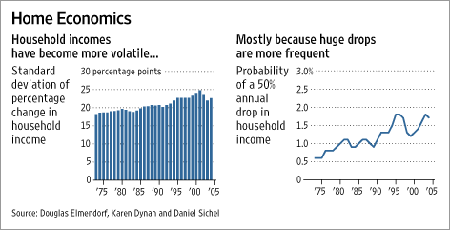From MarketWatch:
Home prices fall at fastest rate in 16 years
Home prices in 10 major U.S. cities dropped at the fastest pace in 16 years in the 12 months ending in April, according to Standard & Poor’s Case-Shiller home price index released Tuesday.
Home prices in 10 cities fell 2.7% year-over-year, the largest decline since September 1991. Meanwhile prices in 20 cities dropped a record 2.1% year-over-year. The 20 city index is more comprehensive, but its history only goes back to 2001.
Price appreciation has slowed for 17 consecutive months.
From Reuters:
US April existing home prices fell-S&P/Case Shiller
Prices of existing U.S. single-family homes dropped in April, extending a string of negative annual returns that started in January, according to the Standard & Poor’s/Case Shiller national home price index released on Tuesday.
“A review of the decline in home price returns on a regional level shows no region is immune to the weakening price returns,” Robert J. Shiller, chief economist at MacroMarkets LLC, said in the S&P release.
The composite month-over-month index of 20 metropolitan areas fell 0.2 percent to 200.45 in April from March, bringing the measure down 2.1 percent from April 2006.
S&P said its composite month-over-month index of 10 metropolitan areas declined 0.3 percent in April to 218.93, for a 2.7 percent year-over-year drop. This index has not fallen as much since late 1991, S&P said in a release.
From Bloomberg:
S&P/Case-Shiller Home Prices Fell 2.1% in April, Index Shows
Home values in 20 U.S. metropolitan areas fell the most in at least six years, weakened by a record supply of properties for sale.
Home values declined 2.1 percent in April from the same month a year earlier, according to a report today by S&P/Case- Shiller. It was the fourth straight drop in the group’s index, which started in 2001.
The housing market continues to restrain the economy even as other areas, such as business spending and manufacturing, accelerate. Elevated inventories of unsold homes, reduced demand and stricter loan requirements will probably keep prices low the rest of this year, economists said.
“No region is immune to the weakening price returns,” said Robert Shiller, chief economist at MacroMarkets LLC and a professor at Yale University in New Haven, Connecticut, said in a statement.
Home prices fell 0.2 percent in April from a month earlier, following a 0.3 percent drop in March, according to the index. The figures aren’t adjusted for seasonal effects, so economists prefer to focus on year-over-year changes.
From Standard and Poor’s:
Data through April 2007 released today by Standard & Poor’s for its S&P/Case-Shiller® Home Price Indices, the leading measure of U.S. home prices, shows the annual growth rate in prices of existing single family homes across the United States declined again, the 17th consecutive slowdown since December 2005.

